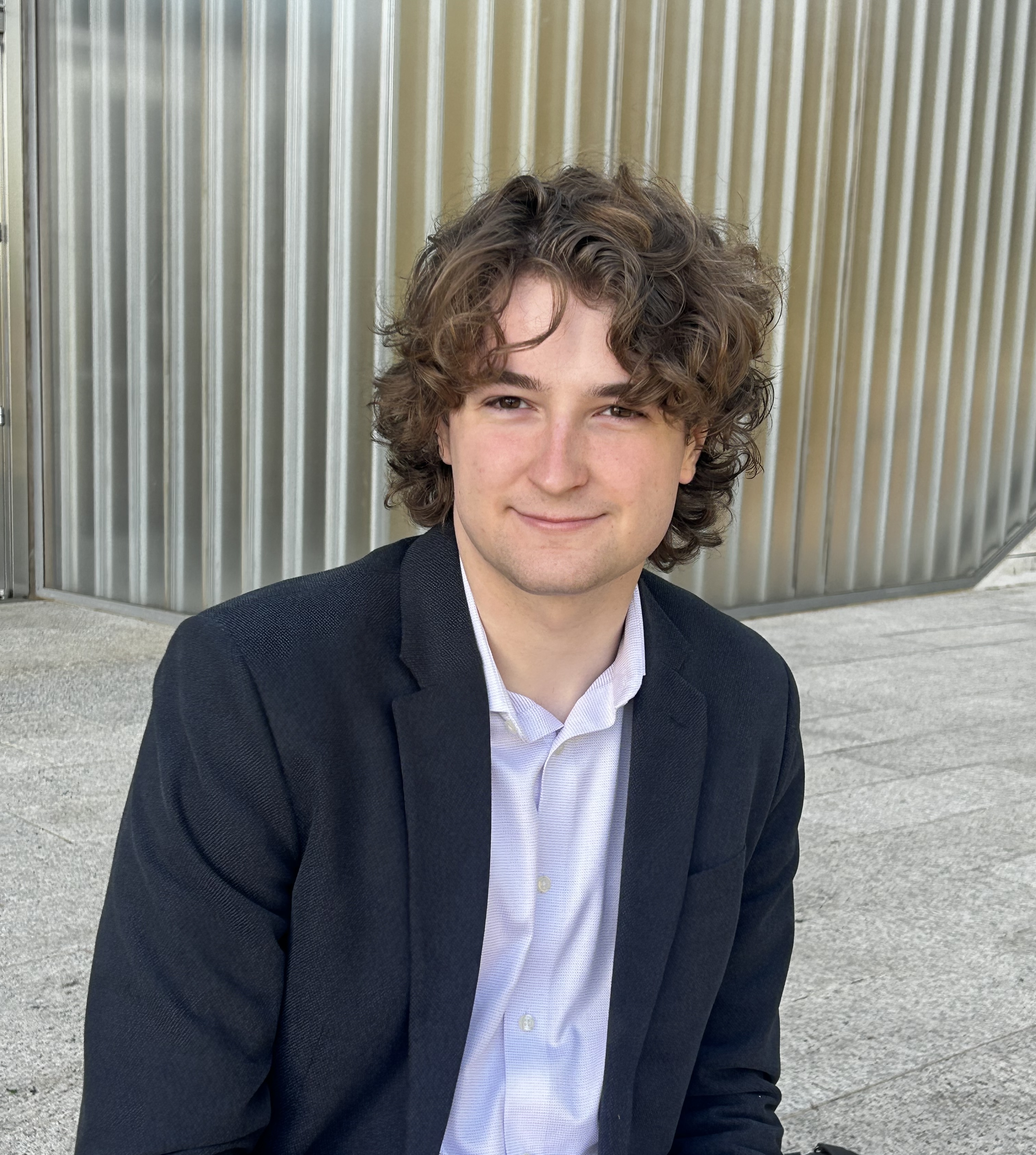Cellular and Molecular Bioengineering
(I-351) Exploring Tunable Substrates Combined with Expansion Microscopy

James Lowe
Undergraduate Researcher
University of Oklahoma
Oklahoma City, Oklahoma, United States- SW
Stefan Wilhelm
Associate Professor
University of Oklahoma, United States
Presenting Author(s)
Primary Investigator(s)
Since the development of expansion microscopy (ExM) by Chen et al. in 2015, a steady flow of new methods to image cells in their expanded forms have emerged. The idea of ExM is that a target cell is introduced to a hydrogel, which enters and expands in water, simultaneously expanding the cell.1 An expanded cell can be 4 times larger using the ExM protocol. This is a tool that, when combined with certain plane imaging microscopes and protein labeling, can generate three dimensional maps of a cell with a significantly higher resolution than could be achieved in non-expanded cells due to the light resolution limit.1
In a separate area of the biomedical field, studies into the effect of the properties of surface substrates that cells are grown on has shown significant limitations of standard plastic/glass culturing.2 Most cells in the body grow on soft tissue material, such as vessel walls or extracellular matrices. Established methods of growing cells on these materials has not yet considered applying ExM to the protocol because it is difficult to remove cells from a soft surface.
In this project, we explore potential methods to make the substrates for various goals, and subsequently image cells under these conditions. Among the investigated variables: substrate material and rigidity and their effect on morphology, proliferation, and internal structure of cells. Additionally, an example experiment using nanoparticles was completed, to demonstrate nanoparticle uptake differences in cells grown on gels.
Materials and Methods::
Three general substrates were used: Biological crosslinked hydrogels, synthetic crosslinked hydrogels, and silicon polymer. Adherent cells are seeded on the substrates coated with fibronectin to promote cell adherence. At the conclusion of the experiment, researchers will fix the cells with paraformaldehyde (PFA) and fluorescently tag cells using the DNA stain 4′,6-diamidino-2-phenylindole (DAPI)for the nucleus and the glycoprotein stain wheat germ agglutinin (WGA) for the cell membrane. Then, the expansion gel is poured atop the cell layer and the resulting gel-substrate block is placed in a digestion buffer that removes structures in the cell that would prevent expansion. The expansion gel with cells is removed from the substrate by methods specific to the substrate.
Biological crosslinked hydrogels use alginate-calcium scaffold structure which are cleaved by Ethylenediaminetetraacetic acid (EDTA) and tuned by the concentration of alginate. Synthetic crosslinked hydrogels explored used N,N′-(1,2-dihydroxyethylene)bisacrylamide (DHEBA) to crosslink acrylamide gels reacted using ammonium persulfate and N,N,N',N'-Tetramethylethylenediamine (TEMED), cleaved using a 0.2 M sodium hydroxide solution, and tuned by the concentration of DHEBA in the hydrogel. The silicon polymer was made using Polydimethylsiloxane (PDMS) polymer by mixing curing and elastomer reagents, removed physically by pealing, and tuned by the ratio of reagents.
The expansion gel, now having surrounded and infused the cells on the surface of the substrate and having been removed from the substrate, is expanded in water. The cells, now physically expanded to 4x the original size, is imaged on a confocal microscope.
Results, Conclusions, and Discussions::
The chosen methods were tested for viability of procedure. DHEBA gels, while at first appearing to be ideal materials for the experiment, showed significant rigidity variability over time, and fully dissolved in media of all types tested within 24 hrs. While this problem could be solved by adding DHEBA to the media, which prevents dissolution, this was deemed impractical as it would add confounds to experiments.
Alginate gels, which were successful in growing cells on their surface, were easily dissolved using EDTA, and are well established in soft cell culture. The alginate gels, made from 1-5% alginate for variable rigidity, maintained a Young’s modulus of ~1 to 30 kPa with compression, like much of the body’s physical surfaces that cells experience. While expansion has not yet preformed on these cells, that is the next step of our study.
PDMS polymers showed a much higher rigidity, on the order of 1-10 GPa with compression, similar to bone and tendon. Cells have not yet been grown on PDMS, but previous studies have shown that it is possible. We have confirmed that an expansion gel can be pealed from the surface of the PDMS substrate. This makes PDMS a good candidate for our future study in the overall experiment.
These results show a promising path towards a substantial improvement to imaging using ExM. In the next stages of the experiment, we will perform ExM on cells grown on soft substrates. Having done so, we will have established a new method to study how differences in cell environment affect the morphology and cell structure of cells in vitro. This will improve the fields knowledge of cancer environments, which often have different rigidity to surrounding tissue, and the progression of other diseases.
Acknowledgements (Optional): :
References (Optional): :
1. Chen, F., Tillberg, P. W. & Boyden, E. S. Expansion microscopy. Science (1979) 347, 543–548 (2015).
2. Piersma, B., Hayward, M. K. & Weaver, V. M. Fibrosis and cancer: A strained relationship. Biochimica et Biophysica Acta - Reviews on Cancer 1873, (2020).
